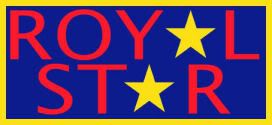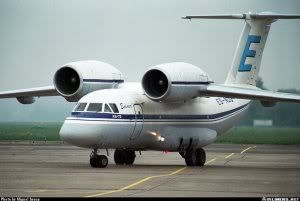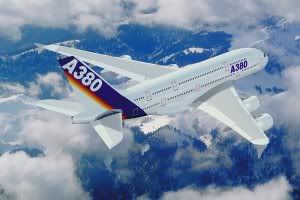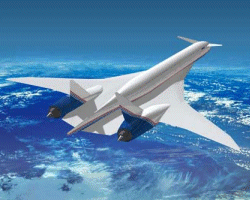Royal Star Airlines
| Royal Star Airlines | ||||||||
|---|---|---|---|---|---|---|---|---|

| ||||||||
|
The largest civilian airliner held by the government, the Xheng Dynasty as well as public shareholders throughout the Arch-Imperium. Royal Star Airlines also has a local monopoly in regards to domestic flights as only National Airlines have the right to fly domestic routes. Royal Star Airlines features a proud fleet of 300 airplanes and more than 1000 helicopter based flights throughout the Arch-Imperium.
Royal Star Airlines is a subsidiary of Arch-Imperium Corporate powerhouse, Royal Star Enterprises.
Contents
Fleet
Royal Star Airlines is currently suffering from a significant aircraft shortage, forcing the Imperial Stratagem to open up domestic airflights to international companies. The result is a flood of internatinonal companies into the omestic flight market. However Royal Star Airlines is seeking rapid and vast expansion to compensate for this astounding growth. Even their cruise lines are seeking expansion as well due to their involvement with resorts and entertainment complexes throughout the world.
The aircraft that Royal Star Airlines utilizes are currently produced by two major manufactures, Construcciones Aeronaúticas Sociedad Anónima (CASA), and Novara. Both aircraft manufacturers have been contracted to provide aircraft, CASA with larger aircraft, Novara with short range.
Royal Star Airlines is seeking a partnership with Imperial AeroWorks to purchase the plans to all aircraft that are used with Royal Star Airlines, and in return offering limited royalties to Novara and CASA. This will enable Imperial AeroWorks to produce the aircraft domestically, encouraging the job market substantially to aircraft manufacturing, and possibilities of selling them on the international market.
- 20: 500-800 seat aircraft (Single or multiple classes)
- 35: 400-600 seat aircraft (Single or multiple classes)
- 50: 200-400 seat aircraft (Single or multiple classes)
- 115: 100-250 seat aircraft (Single or multiple classes)
- 130: 20-100 seat aircraft (Single or multiple classes)
Short Range
</div>130 of Novara's V.44 Turboprop Airliners compose the largest numbers of the aircraft in Royal Star Airlines. These planes have proven to be more than adequate for the use of Royal Star Airlines, as well as its chief stockowner, Dynastic International. The V.44's were purchased at the same time as the Bir.96's.
Despite the large purchase, there is still some concern regarding the number of passengers the Novara V.44's have been able to handle the mass swarming of passengers who are seeking transportation. As a result, Royal Star has been force to consider possibilities of purchasing additional small-medium sized aircraft just for domestic flights.
- 130 Novara V.44 Turboprop Airliners
Short Medium Range
</div>Royal Star Airlines produced a second model, the Bir.96 Twin-Jet Commuter Airliner. Designed in 2 specifications for 80 seats or 100 seats, Royal Star uses both models in its short-medium range flights. Current short-medium flight ranges are limited to domestic airflights as well as some foreign cities in neighboring nations. There is a concern that the current fleet of 115 Bir.96's will not meet the massive need for transport aircraft. There is also some talk about Dynastic Transport and Freight buying some for their courier services but this may seem unlikely. Dynastic Fleetworks however is looking at a private line of their own jets to transport passengers to and from their Dynastic-Class worldships.
The Bir.96 is also convertable to a cargo freight aircraft which Royal Star Airlines is considering purchasing in some numbers for their cargo line, but it seems more efficient to convert larger aircraft for that purpose for mainstream flights, then have smaller craft, like the Bir.96 to operate locally.
- 115 Bir.96 Twin-Jet Commuter Airliners
Medium Range
</div>Construcciones Aeronáuticas S.A. (CASA) produced a small craft for transport of up to 100 passengers. This is vital for the domestic-short range international flight market that seems to be in high demand for tourism locally. These aircraft have a reputable service career and CASA also has its own reputation to protect.
The AN-72's were the first planes from CASA to arrive and put to immediate use. Arriving in orders of 10, it took nearly 6 months for the full order to complete itself. The result was that the aircraft's reputation was already maintained with effective and efficient travel service.
Currently the active number of AN-72's is stable at 130, but there are rumours of Dynastic International purchasing additional aircraft for its Dynastic Worldship market.
- 130 AN-72, Passenger/Cargo Jets
Medium-Long Range
</div>From the Spanish Kingdom's juggernaught of aircraft manufacturing, CASA came new A340's. The A340 is sometimes nicknamed "Venerable" due to its reputation for excellence and multifunctionality. The A340 is capable of medium-long range transport depending on capacity and fuel needs. Royal Star Airline's A340's have been fitted for the latter but operate domestic and short international flights as well, being a multifunctional plane.
Royal Star Enterprises has already doubled the order of the A340's to 100 total aircraft in its fleet. The majority have not yet arrived until CASA meets these orders. It is anticipated that Royal Star Enterprises will also purchase the plans for these aircraft so that Imperial AeroWorks can produce them domestically without need to rely on foreign contracts. Imperial AeroWorks has yet to publically announce this purchase but still it may want to for the sake of effective and efficient manufacturing, and protecting the domestic job market.
- 50 Construcciones Aeronáuticas S.A. A340's
Long Range
</div>Largest of the Royal Star Airline Fleet, are the CASA A380's, and no doubt the most expensive as well. The A380 is a double deck aircraft able to transport 800 people of 500-800 in multiple class configurations. The A380 is so effective in transport, the Xheng Dynasty itself purchased 3 of these massive jumbojets for personal transport craft, heavily converted interiors make them fit for royalty.
The A380 is the largest aircraft in the world currently and lives its reputation as an effective transport craft. The A380's in the fleet are currently always booked and may need additional craft to assist the huge demand in airflight boom. Current A380's also have excellent services normally not offered on other planes such as personal LCD television/computer screens for every single seat on the aircraft. These features shoot up the costs of the aircraft but passengers who book on the A380's can afford them.
- 20 Construcciones Aeronáuticas S.A. A380's
The Sonic Dream Cruiser
</div>Determined to end Boeing's monopoly on the sonic jetliner civilian design, Royal Star Enterprises today revealed plans to develope the Sonic Dreamcruiser. Royal Star Airlines currently already offers a wide range of aircraft, including the highly successful A380's. However the Sonic Dreamcruiser will take on another dimension of air travel traffic.
Instead of the A380's massive capacity, requiring a hub and spoke model of operation, the Sonic Dream Cruiser was designed for rapid point-to-point connections for only 250 passengers. With delta wings and flying just short of the speed of sound at 0.95 Mach (about 1010 km/h or 627 mph at altitude), the Sonic Dream Cruiser promised 20% faster speed than conventional airplanes without the noise pollution caused by supersonic Concorde's sonic boom. The aircraft would have flown at altitudes in excess of 40,000 feet, and would have possessed a range somewhere between 6,000 and 10,000 nautical miles.
Royal Star Airlines has never purchased one of Boeing's own Sonic Cruisers, instead relying on internal domestic developed technologies to make the design even possible, the first designs estimate the Sonic Dream Cruiser would burn 15-20% more fuel than conventional aircraft. However, it was estimated the aircraft would burn roughly the same amount of fuel as a conventional aircraft flying the same route due to the faster travel-time. At 250 feet in length, with a wingspan of 164.9 feet, the design of the Sonic Dream Cruiser is substantially smaller than the massive A380's and is meant for more direct fast flights for smaller passenger complements while the more conventional fleet was used for regular flights.
The design of the craft, no doubt resembles that of Boeing's craft due to their efficient design. Wind tunnel perfection inevitably lead to this single form of wing design and effective flight aerodynamis were perfected.
It is anticipated that the new Sonic Dream Cruiser would take a number of years to fully develope into a test prototype then a successful design shall flourish from there.
This move was finalized by the Royal Star Airlines board of directors in direct reprisal for Venice Boeing's refusal to sell shares to Royal Star Enterprises. The result is the lighting of the flames of competition. A partnership with incoming aircraft manufacturer Qairbus would be a possibility.
Links
See also:






